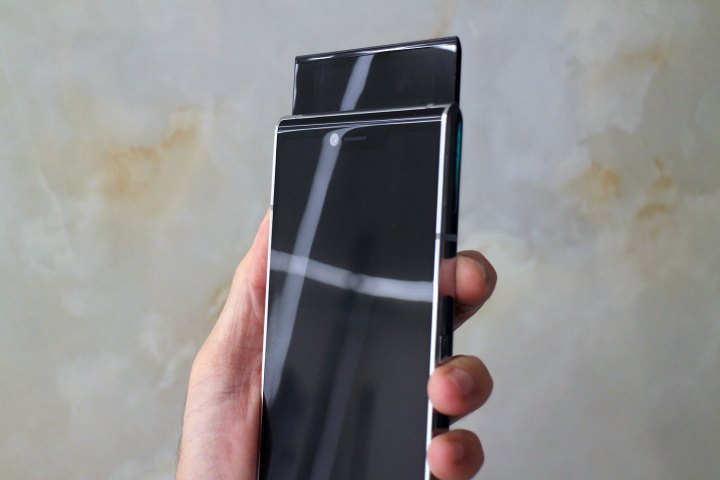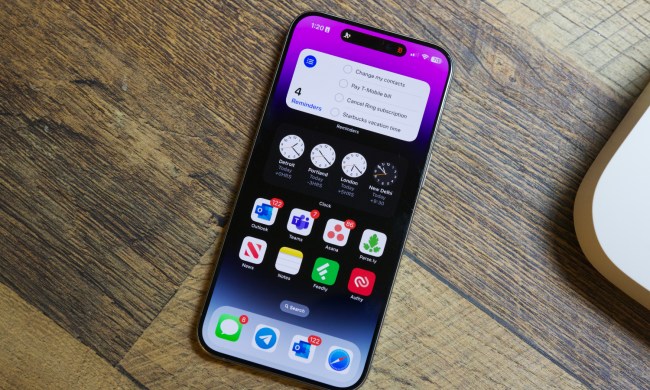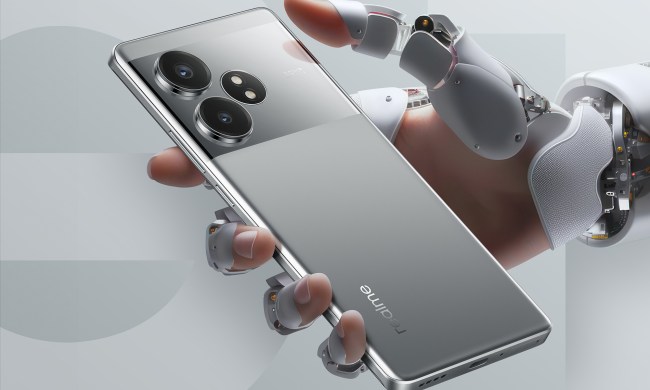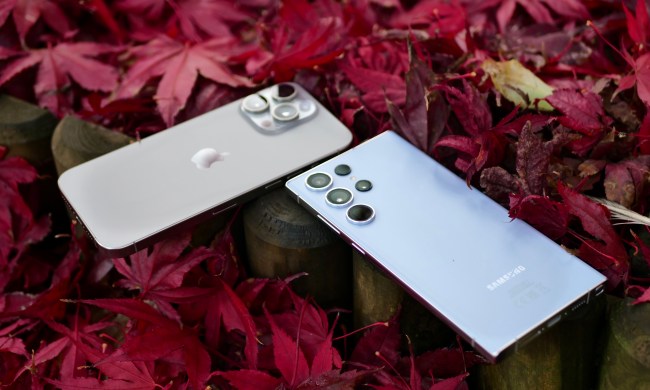A year and a half ago, Sirin Labs had what its chief marketing officer describes as an almost religious moment, which ultimately resulted in the creation of a game-changing smartphone. It’s called the Finney phone, and it may be coming at exactly the right time to assist in bringing about a sizeable change in our everyday lives.
Intrigued? The Finney is a smartphone that connects you to the world of cryptocurrency, integrating blockchain technology and key cryptocurrency tools, with one of the world’s most secure mobile operating systems to keep everything safe. At this point, due to the overexposure this tech has been having recently, you’re either desperate to read on, or about to quickly navigate away. If you’re in the latter camp, wait just a second.
Sirin Labs knows it’s dealing with an industry that’s confusing, dense, and seemingly made up of buzzwords. The company understands this problem, and has genuinely made the Finney phone simple to use, opening up a fascinating new technology in a way that’s understandable and interesting to the average human being.
We’ve seen a prototype of the phone, and sat down with the people bringing it to life, in order to have our minds changed about what initially sounds like a niche device useful only to a few billionaires around the world.
Simple to use
In the U.S. alone, Sirin Labs research discovered 25 million people have cryptocurrency tokens and are therefore likely to be actively speculating. It’s difficult to call that a niche, and it’s obvious by the amount of press, the countless seminars and conventions, and money that’s being made from it and blockchain technology that there is a highly motivated community behind cryptocurrency. They’re the ones who will love the Finney phone first; but once the geeks are onboard, Sirin Labs is coming for you.

We asked Nimrod May, Sirin Labs’ chief marketing officer, if the Finney phone will be the device for people to get started with cryptocurrencies. He emphatically replied, “Absolutely, 100 percent, yes.” Developed by Sirin Labs’ team of 70 over the past 18 months, many of whom were already blockchain and cryptocurrency fans before the project started, the company wants Finney to bridge the gap between the blockchain and the mass market. Sirin Labs co-CEO Zvika Landau explained the vision for the Finney phone’s user friendliness further.
Once the geeks are onboard, Sirin Labs is coming for you.
“Most people are afraid of cryptocurrencies, and don’t know where to start,” Landau said. “The user experience we want is one that is so simple, you won’t need to understand how blockchain technology works, you won’t need to understand how to sign a transaction, or what happens in the background at the time.”
Think of the Finney phone with its integrated cryptocurrency support as an alternative to an iPhone with Apple Pay, or an Android phone with Google Pay. That’s how Sirin Labs envisages its potential impact. It’s acutely aware of how much hand-holding it will need to still do, and will not only transform its London store into an educational center-style showroom, but also hold events and meetups around the world to get people started.
Technology and security
At the moment, crypto transactions are complicated, with multiple tokens, security threats, no central organization for protection, and complicated wallets for storing cryptocurrencies accessed either online, or offline with the help of hardware like a USB stick. Hardly the most user-friendly system, or one that encourages anyone to make fast, real-world payments.

The Finney phone streamlines all this, and aims to take away the hassle. You may remember Sirin Labs’ first phone, the monstrously expensive, hand-finished Solarin phone with its Android-based Sirin OS software, which focused on high levels of security. The Finney phone’s version of Sirin OS uses 80 percent of the Solarin’s software, with additional measures directly related to cryptocurrency use added in. Specifically, it includes a multi-layer cyber security suite, a DApp decentralized app store, a token conversion system, and an embedded cold storage wallet.
The cold wallet gives the Finney its wow factor.
The cold wallet gives the Finney its wow factor. While phones with pop-up cameras have become popular this year, the top of the Finney phone extends up to open the cold wallet and reveal a 2-inch second screen for the authentication key. When the screen is closed the cold wallet, which uses its own separate micro-controller unit (MCU), is totally shut down. Your wallet is safe and disconnected from the internet. The private key is kept in a separate secure zone, similar to that used on the Solarin phone.
You slide up the screen manually, it’s not motorized, and on the version we tried the action was smooth and nicely dampened. Too nice, actually, and the temptation was there to flip it up and down subconsciously. This wouldn’t be a good thing, and would activate the wallet endlessly, so Sirin Labs is engineering it so there’s enough resistance to stop that temptation.
Specifications
We haven’t tried the phone outside of sliding up and down the cold wallet, as the device was a non-working prototype made to show the design, therefore we cannot comment on any aspects of the software, its operation, or actually carrying out a transaction using the Finney.

What we do know is a complete rundown of the specs. It has a Snapdragon 845 processor with 6GB of RAM at its heart, along with a 6-inch, 18:9 aspect ratio screen — yes, it has a notch — and a 12-megapixel single-lens camera on the back. The selfie camera has 8 megapixels, there’s a 3,280mAh battery inside, and 128GB of internal storage space. The body style is reminiscent of the Solarin, with flowing curves on the ends and sides, but without the expensive materials that pushed the price of its first phone into the stratosphere.
The Finney phone costs $1,000, and is currently being produced by Foxconn. It will launch in November and be available to buy almost immediately afterwards, with the final dates still to come. It can be pre-ordered through Sirin Labs site now, if you’re really keen. The second desktop device discussed when the Finney phone was first officially announced will not come at launch, but in 2019, a year when Sirin Labs has big plans.
Future plans
Over the coming year, Sirin Labs will connect Finney phones to a blockchain network, which will run services that use Sirin Labs own SRN token. Beyond that, the Sirin OS is open source and other manufacturers will be able to create their own super-secure blockchain phones, plus Sirin will release a software development kit to help integrate apps and tokens. While names were not mentioned, Sirin Labs said it has been approached by “six or seven” manufacturers already. Prior to our meeting, rumors spread that Huawei is investigating a blockchain phone, although it has not been officially tied with Sirin Labs yet. The company won’t have a say in how these other devices are developed, or force the use of a second screen for the cold wallet; but it plans to protect its brand by eventually adding a “Sirin OS Inside” style tag to devices.
The timing of the Finney phone is fascinating.
What about the SRN token? This is Sirin Labs own cryptocurrency, and its initial coin offering (ICO) raised $157 million. When you buy the Finney phone, you’ll be able to do so with a credit card; but Sirin Labs will convert that payment into SRN tokens. The harsh reality, if that’s what it is, is Sirin Labs isn’t a hardware manufacturer expecting to make money from its devices. It likely expects to make money from a service — in this case the SRN token and its blockchain ecosystem. It’s the same approach Apple took with the iPhone and the App Store.
The potential is there too, because of the simplicity envisioned by the team. The Finney phone brings together a token conversion system, a cold wallet, lots of security, and everything else one needs to use cryptocurrencies into a single, easy to use device. Using the Finney phone to pay will be as simple as using the camera to scan a barcode, then the onboard cold wallet to secure the transaction. That’s it.
Risk and potential
Except, not really. Options are limited for regular people to use cryptocurrencies in everyday situations. It’s almost solely used for speculation, fundraising, and for purchases of questionable legality at the moment. There are other decentralized apps and services, such as the Brave browser — which will be pre-installed on the Finney phone — or games like CryptoKitties, but it’s not for your weekly shop yet. It also doesn’t instantly make entering the cryptocurrency world any less financially risky than it is now.
However, things are changing. The risks associated with cryptocurrency won’t affect the Finney phone or Sirin OS, and are mostly caused by speculators.
“As more people adopt cryptocurrency for daily usage, it will become more stable, which will encourage more people to use it,” Landau told Digital Trends.
The Finney phone has the potential to lessen the turmoil by speeding up the adoption of cryptocurrencies around the world. The timing of this phone is fascinating, coming when attention on blockchain and cryptocurrencies is at fever pitch. May knows the opportunity is there, saying, “If you come with the right product and the right technology, you have the chance of changing the world.”
He is first to admit the pretentiousness of the statement, but it’s impossible to deny the prospects here, and only the shortsighted would fail to be excited by them. However, like cryptocurrency itself, it now needs to live up to the hype.





















